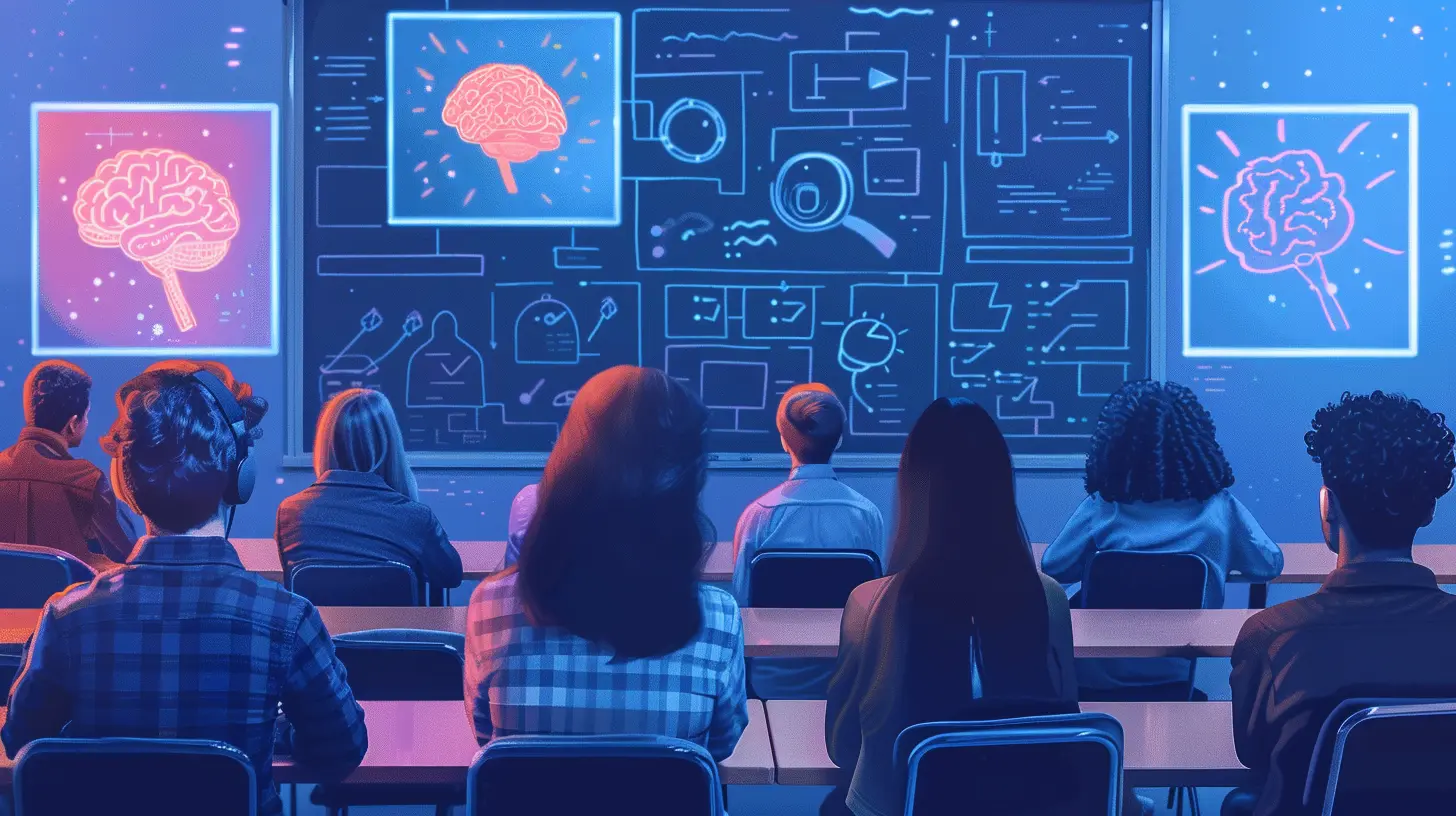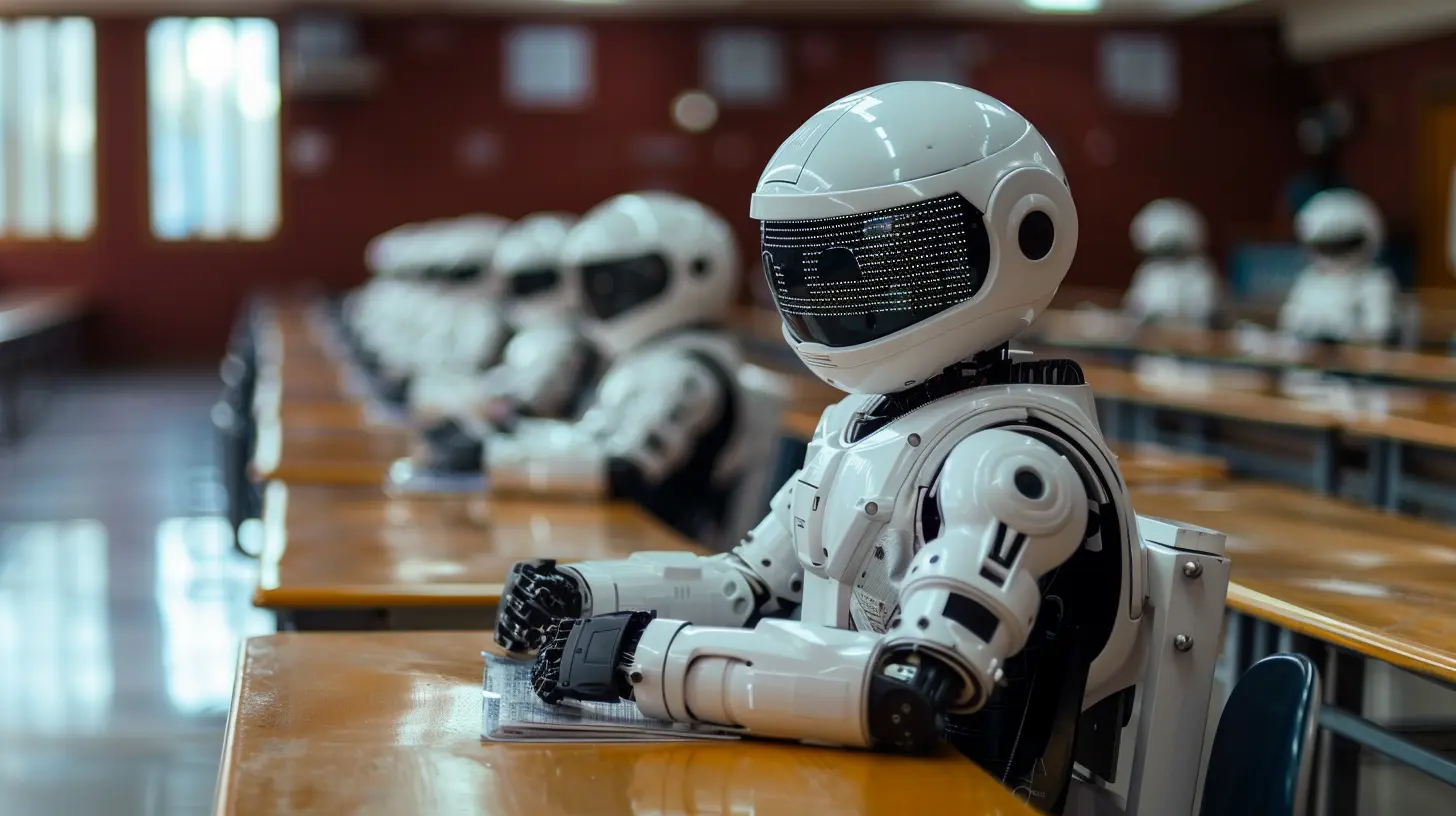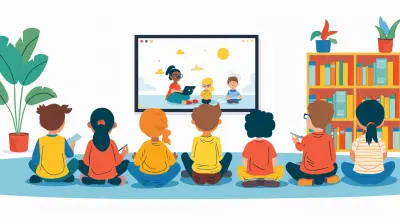The Role of Artificial Intelligence in Supporting Teacher Workload
22 March 2025
In today's fast-paced world, teachers are juggling a lot. From lesson planning to grading papers, answering emails, and keeping track of student progress, they have a never-ending to-do list. If you've ever spoken to a teacher, you'll know that workload is one of the top concerns in the profession. But what if I told you that Artificial Intelligence (AI) could help lighten the load? Yes, that's right! AI isn't just for tech geeks and sci-fi fans anymore; it's stepping into classrooms, offering solutions to reduce the workload of our educators.
In this article, we’ll dive deep into how AI is playing a role in supporting teacher workload. We’ll explore what tasks it can handle, the benefits it brings, and also touch on some of the challenges it presents. Ready? Let’s get started!

What is Artificial Intelligence?
Before we get too far ahead of ourselves, let’s quickly define what we mean by Artificial Intelligence. In simple terms, AI refers to computer systems that can perform tasks that would normally require human intelligence. These tasks can include learning from experience, understanding natural language, recognizing patterns, and even making decisions.When it comes to education, AI has the potential to revolutionize the way teachers manage their time and tasks. It’s not about replacing teachers (because let’s be real, no robot can replace the human touch in teaching), but rather about giving them tools to make their lives a little easier.

The Growing Burden on Teachers
Let's face it—teaching has always been a demanding job. You’re not just delivering lessons; you’re also acting as a mentor, counselor, administrator, and sometimes even a referee. On top of that, there's grading, planning, and paperwork. According to studies, teachers can spend up to 50% of their time on non-teaching tasks. That’s a huge chunk of their day spent on things that don’t directly impact their students' learning experience.Wouldn't it be great if teachers could spend more time actually teaching and less time on the administrative grind? That’s where AI comes in.

How AI Is Supporting Teacher Workload
AI is starting to make waves in the education sector, offering a variety of solutions to help ease the burden on teachers. Below, we’ll explore some of the key ways AI is transforming the classroom and supporting educators.1. Automating Administrative Tasks
One of the most time-consuming aspects of teaching is dealing with administrative tasks. Grading tests, organizing lesson materials, and managing student data can take up an enormous amount of time. AI-powered tools can automate much of this. For example, AI can:- Grade assignments: AI can now grade multiple-choice quizzes, short answer responses, and even some forms of written essays. Programs like Grammarly and Turnitin already offer some of these functionalities, saving teachers hours of work.
- Attendance systems: Some schools are now using AI-based facial recognition systems to take attendance, cutting down on the time it takes for teachers to manually track who’s present.
- Managing schedules: AI can streamline scheduling by suggesting optimal times for meetings, parent-teacher conferences, or even lesson plan adjustments based on student progress.
2. Personalized Learning for Students
Every student learns differently, and tailoring lessons to meet individual needs can be a major challenge for teachers. AI can step in here by helping with personalized learning. AI-powered tools can:- Track student progress: AI can analyze student performance and provide insights on where they are excelling or struggling. This allows teachers to offer personalized attention where it’s most needed.
- Adaptive learning platforms: Tools like DreamBox and Knewton use AI to adapt lesson plans based on a student’s learning pace and style. This makes sure that no student falls behind, and teachers spend less time re-teaching concepts.
- Instant feedback: AI can offer real-time feedback to students, helping them understand mistakes immediately. This not only saves teachers from having to go over the same material repeatedly but also helps students improve faster.
3. Assisting with Lesson Planning
Creating engaging lesson plans is one of the most creative but time-consuming aspects of teaching. AI can help by:- Generating lesson ideas: AI can suggest lesson plan ideas based on curriculum requirements and student data. This can help teachers come up with fresh, engaging content without spending hours on research.
- Curriculum mapping: AI can analyze standards and learning objectives, helping teachers align their lessons with what’s required by school boards or state exams.
- Resource recommendations: AI can recommend educational resources, such as videos, articles, or activities, based on the topic being taught. This not only saves time but also ensures that content is up-to-date and relevant.
4. Reducing the Burden of Grading
Grading is a necessary evil in teaching. It’s time-consuming, repetitive, and often piles up at the worst times (hello, holidays). AI can take over much of this burden, especially for assignments that have clear right or wrong answers, like math quizzes or science tests.- Automated essay grading: Believe it or not, AI can even grade essays. While it’s not perfect yet, systems like E-Rater (used by the GRE) can assess writing quality, grammar, and structure, giving teachers a starting point for their assessments.
- Feedback generation: AI can also generate feedback, providing students with comments on their assignments. This can save teachers hours of time while still giving students valuable insights into their work.
5. Enhancing Communication with Parents
Keeping parents informed about their child’s progress is another task that teachers have to juggle. AI-powered communication tools can help by:- Automating progress reports: AI can generate real-time progress reports for parents, offering them insights into how their child is performing academically and behaviorally.
- Scheduling parent-teacher meetings: AI can help coordinate meeting times and even send out reminders, reducing the back-and-forth emails that usually come with scheduling.
6. Professional Development for Teachers
AI isn’t just about helping teachers with their daily tasks—it can also help them grow professionally. AI can assess areas where teachers might need improvement and recommend professional development courses or resources to help them refine their skills. This kind of support ensures that teachers are constantly evolving and improving, which ultimately benefits both them and their students.
The Benefits of AI in Education
So, what are the key benefits of AI in education? Let’s break it down:- Time-saving: The most obvious benefit is that AI can save teachers a ton of time by automating repetitive tasks.
- Personalized learning: AI can help teachers offer more personalized learning experiences for their students, ensuring that no one is left behind.
- Improved accuracy: AI systems can analyze data more accurately than humans, offering insights that can help improve student outcomes.
- Enhanced communication: AI can streamline communication between teachers, students, and parents, ensuring that everyone is on the same page.
Challenges of AI in Education
Of course, no technology is without its challenges. While AI offers many benefits, there are some hurdles to consider:- Cost: Implementing AI systems can be expensive, especially for schools with limited budgets.
- Training: Teachers need to be trained on how to use AI tools effectively, which can take time and resources.
- Ethical concerns: There are concerns about data privacy and how much information AI systems should be allowed to collect on students.
- Reliability: AI isn’t perfect. There’s always the risk of technical glitches or errors, which could lead to incorrect grading or feedback.
The Future of AI in Education
AI is still in its infancy in the education sector, but the potential is enormous. As technology continues to improve, we’ll likely see even more innovative ways that AI can support teachers and improve student outcomes. Whether it’s more advanced grading systems, even smarter personalized learning platforms, or AI-driven curriculum development, the future looks bright.But it’s important to remember that AI is a tool, not a replacement. While it can take some of the burden off teachers, it can’t replace the human connection that is so crucial in education. At the end of the day, the goal is to create a balance where AI supports teachers, allowing them to focus on what they do best—teaching, inspiring, and shaping the future.
Conclusion
It’s clear that AI has the potential to make a significant impact on the world of education. By automating administrative tasks, personalizing learning, assisting with lesson planning, and even reducing the burden of grading, AI can help teachers reclaim valuable time and focus more on their students.However, like any new technology, there are challenges to overcome. Cost, training, and ethical concerns need to be addressed to ensure that AI is implemented effectively and responsibly. But with the right approach, AI could be a game-changer for educators everywhere.
So, the next time you hear about AI in education, don’t think of robots taking over the classroom. Instead, think of it as a helping hand—a tool that can lighten the load and help teachers do what they do best: teach.
all images in this post were generated using AI tools
Category:
Educational TechnologyAuthor:

Zoe McKay
Discussion
rate this article
9 comments
Peregrine McLaurin
In classrooms bright, where minds ignite, AI lends a hand, a guiding light. With burdens eased, creativity freed, Together we rise, planting knowledge's seed. A future we weave, inspired indeed.
April 3, 2025 at 11:43 AM

Zoe McKay
Thank you for capturing the essence of AI's supportive role in education! Your poetic reflection beautifully highlights how technology can enhance creativity and lighten the load for teachers.
Zevros Hernandez
This article beautifully highlights how AI can be a game-changer for teachers, easing their workload and letting them focus more on what they love—nurturing and inspiring students!
April 1, 2025 at 11:46 AM

Zoe McKay
Thank you for your kind words! I'm glad you found the article insightful. AI truly has the potential to transform teaching by empowering educators to focus on their passion for student growth.
Emmeline Brown
This article effectively highlights the potential of AI to alleviate teacher workloads by automating administrative tasks and providing personalized support. However, it’s essential to consider the challenges of implementation and the need for adequate training to maximize benefits for educators.
March 31, 2025 at 7:11 PM

Zoe McKay
Thank you for your insightful comment! You're absolutely right—while AI offers significant benefits, addressing implementation challenges and ensuring proper training are crucial for maximizing its effectiveness in supporting educators.
Cecilia Warren
AI lightens burdens, inspires teaching's art.
March 31, 2025 at 11:17 AM

Zoe McKay
Thank you! AI truly enhances teaching by streamlining tasks and sparking creativity.
Stella Kirkpatrick
This article highlights a crucial aspect of modern education! Emphasizing how AI can ease administrative burdens for teachers is essential. It would be great to include practical examples or case studies to illustrate successful AI implementations in classrooms. Great insights!
March 28, 2025 at 11:46 AM

Zoe McKay
Thank you for your feedback! I appreciate your suggestion on incorporating practical examples and case studies; they would definitely enhance the discussion on AI's impact in education.
Zayne Gilbert
Great article! It's encouraging to see how AI can ease teacher workloads and enhance educational experiences. Embracing technology not only supports educators but also helps students thrive. Excited to see how these innovations reshape the classroom environment!
March 27, 2025 at 3:50 AM

Zoe McKay
Thank you! I'm glad you found the article insightful. AI truly has immense potential to transform education for both teachers and students.
Tatianna Wilcox
AI isn't just a tool; it's a game changer that empowers teachers, freeing them to focus on what truly matters: students.
March 26, 2025 at 1:23 PM

Zoe McKay
Absolutely! AI can significantly reduce administrative burdens, allowing teachers to dedicate more time and attention to student engagement and personalized learning.
Wolf Middleton
This article raises fascinating points about AI's potential to alleviate teacher workload! I'm curious about specific AI tools that have shown real success in classrooms. How can schools effectively integrate these technologies while ensuring they enhance, rather than replace, the crucial human elements of teaching? Would love to hear more!
March 23, 2025 at 5:25 AM

Zoe McKay
Thank you for your thoughtful comment! Some successful AI tools include grading software and personalized learning platforms. Schools can integrate these technologies by providing training for teachers and ensuring AI complements their teaching style, fostering collaboration between human and machine.
Mia McWain
Embracing AI in education can transform teaching, reducing workload and enhancing creativity. By leveraging technology, educators can focus on what truly matters—nurturing and inspiring the next generation. Together, let’s unlock the full potential of teaching and learning!
March 22, 2025 at 11:33 AM

Zoe McKay
Absolutely! Embracing AI in education empowers educators to streamline their tasks and foster creativity, ultimately enhancing the learning experience for students.
MORE POSTS

Addressing Underachievement in Gifted Students: What Can Be Done?

Tips for Integrating Formative Assessment in Flipped Classrooms

Leading with Integrity: Building Trust in Educational Leadership

Building Resilient Leaders for the Future of Education

How to Foster Creativity in the Classroom

How to Communicate Effectively in a Foreign Language During Your Studies

How to Use Digital Storytelling in Virtual Classrooms